In the times of the last Piast princes, independent Mazovia was a good morsel, as Zygmunt the Old knew very well. In order to merge the principality with the Crown, he planned a dynastic marriage of his daughter with the elder of the two land heirs and extended the right of heir to the throne to both. So what if the greatest fury loomed along the way, i.e. the rejected woman, and the whole thing ended with two blue blood corpses and one solid pile ...
But let's start from the beginning. In 1503, the ruler of Mazovia, Konrad III Rudy, died. He left behind a widow, Anna Mazowiecka, with two daughters and two sons. Initially, it exercised a welfare government, but in 1516 the magnates forced it to hand over power to its eldest son.
Prince Stanisław, about whom Jerzy Besala - the author of the book "Zygmunt Stary i Bona Sforza" - wrote that he was chivalrous and brave and at the same time mild-mannered despite alcohol abuse , he did not enjoy the reign for long. In 1524 he went to visit his younger brother Janusz, to Błonie, where they both feasted.
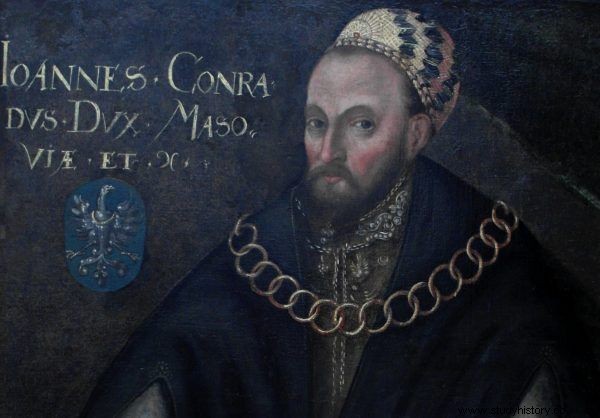
Prince Konrad III the Red, leaving two sons, did not expect the end of the dynasty so soon. A 16th-century portrait of Prince Konrad III (photo:Mathiasrex, Maciej Szczepańczyk, license CC BY-SA 3.0).
The day after a heavily drenched evening, Stanisław suffered from the so-called "next day syndrome" . As his tired stomach was not too eager to take more food, the prince ate only a piece of a capon prepared especially for him, covered with vinegar malmassy.
Two mysterious deaths
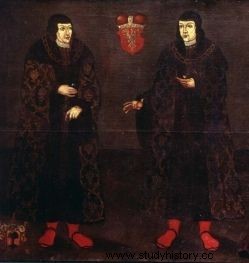
Stanisław and Janusz. The last dukes of Masovia.
Strengthened with delicate meat, the prince went back towards Warsaw with a shaggy face. A simple hangover would quickly pass for Stanisław, but instead of finding himself in full strength again, he fell completely ill. And so the older son of Anna Mazowiecka said goodbye to this vale on August 8, 1524.
The sudden death of Stanisław initially did not raise any suspicions, and had it not been for the equally unexpected descent of his brother Janusz two years later, it would have probably remained so. The younger Piastowicz of Mazovia died suddenly after a serious illness on March 10, 1526.
The independent deaths of two healthy and aged princes, putting an end to the Masovian male line of the Piasts (which some powerful even predicted on Zygmunt's successors in the event of his death without leaving a successor), raised speculations about their poisoning. Suspicion fell on a certain Katarzyna Radziejowska, the voivode of Płock.
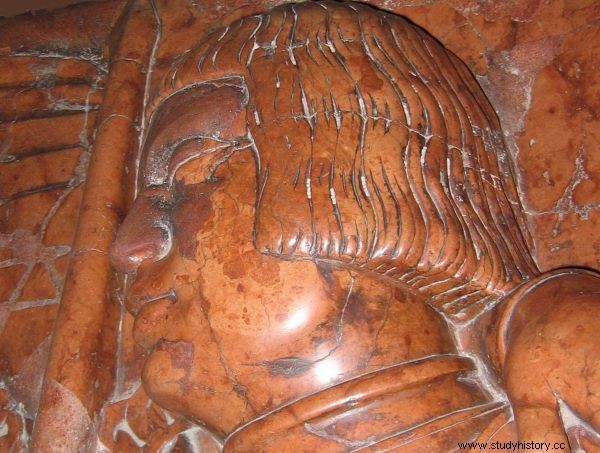
Stanisław did not live long. Could it be because of the cruel voivode? A fragment of the tombstone of Prince Stanisław Mazowiecki (photo:Maciej Szczepańczyk Mathiasrex, license CC BY 2.5).
Calculation murder ...
The aforementioned miss was at the court of Duchess Anna and had considerable ambitions. She wanted to fall in love with herself and lead to the altar the best party in the whole land, and thus one of the benefactor princes . Initially, she aimed at Stanisław, the heir of Mazovia. Noticing what was happening, the duchess mother acted quickly and rid the court of the conqueror of the princely heart.
Catherine, separated from the older brother, switched to the younger one, in front of whom she spread a whole range of her charms. Prince Janusz fell into her sweet snares like a plum in a compote and more and more often visited the clever voivode in her hometown of Radziejowice ...
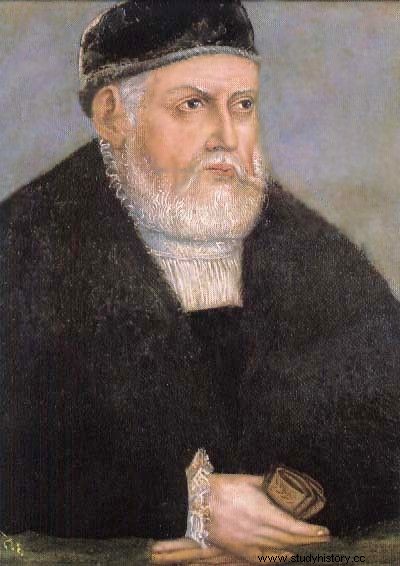
After the death of Prince Janusz, Zygmunt the Old ordered an official investigation ...
Then Katarzyna Radziejowska came to the conclusion that Stanisław, a recent subject of great plans, was standing on the way to power and wealth. After all, she didn't want to be the wife of any prince, but this prince who sits on the throne!
The agile voivode decided to take matters into her own hands and use the meeting of the two brothers in Błonie to solve the "problem". As we know the story of a hangover and a capon, suffice it to add that Radziejowska was to spice this unlucky bird with some slow-acting poison. She is burdened by the fact that she told her friend Piotr Jordanowski to hide the capon and not give it to anyone else to eat.
… and out of disappointment?
Katarzyna was already rubbing her hands, meanwhile, things turned out to be unfavorable for her again. Janusz must have fallen out of love and nothing foreshadowed that he would be married soon. Or maybe the haughty prince never took this love seriously? In any case, disappointed Radziejowska decided to send him to the afterlife.
To this end, she organized a plot to assassinate Janusz. The whole scandal was discovered in advance, and all the leads led to Jordanowski, who ended poorly. After he was captured, accused and exiled from the ranks of Christians by the Płock canon, the executioner cut the thread of his life with an ax.
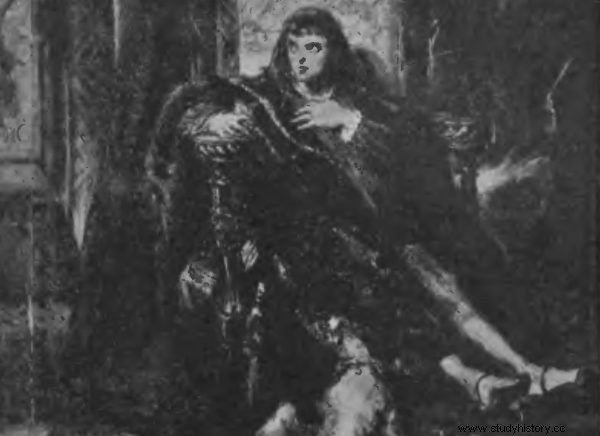
This is how Janusz III, the last prince of Mazovia, was imagined in 1879 by Jan Matejko (source:public domain).
As Jerzy Besala writes, according to an anonymous account, Radziejowska was to take the murder into her own hands:through the noblewoman Kliszewska (Kliczowska), she persuaded Piotr the cannoneer and Maciej the musician, serving at the prince's court, to poison Janusz with the substance given in the drink. And this plot was discovered, but it was too late for the ruler of Mazovia.
Femme fatale or witch?
Finally, the question remains, why the hell are those witches in the title. Well, the noblewoman Kliszewska was taken to torture together with a suspicious baker. Treated by the little master with fire, they testified that they secretly poisoned the prince on his way from Rzewo near Różan to Warsaw for several days, which ultimately killed the unfortunate man.
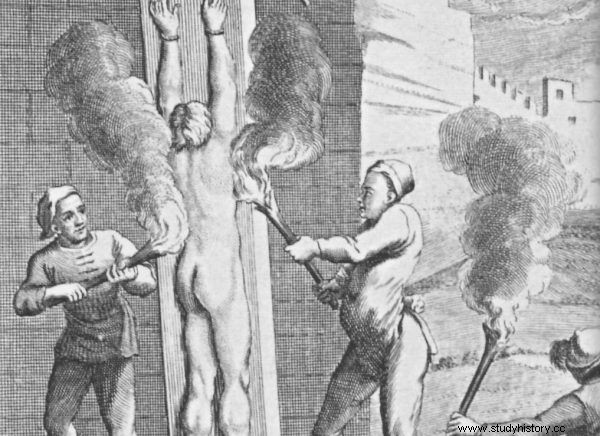
It was only the torturer's fire that dissolved the suspects' languages ... (source:public domain).
Both women, who were in fact only tools in the hands of a cunning voivode, were recognized by the court as poisoners and witches. And since they had been proven (no matter by what methods) to practice magic, they had a straight path to the stake. The execution itself was reported by Marcin Bielski: they baked for four hours, running next to the pole, and when they got together, they bit each other's body until they had roasted and died (quoted after:Jerzy Besala, "Zygmunt Stary and Bona Sforza").
What happened to the ringleader of these conspiracies? Well, Katarzyna Radziejowska was the daughter of the Płock voivode himself. The decisions of the court were irrelevant, and the rumors that the maid dipped their fingers in the death of the mother of princes, who refused to marry against dynastic interests, were equally unimportant.

The mighty father saved Radziejowska from any consequences. This apparently did not affect her stocks on the matrimonial market, as she got married shortly thereafter and was such a calm wife that she disappeared from the pages of history.
Although maybe it's all just a black legend to a god of spirit of a guilty woman? After all, an expert on the history of the Piasts, professor Marek K. Barański said in the "Dynasty of the Piasts in Poland":
After examining the body of the deceased Prince Janusz, the medics found nothing to indicate poisoning. The matter has not been clarified to this day, although other causes of the deaths of both princes are rather indicated.
Barański suggested that it could be tuberculosis or syphilis as a result of the immoral lifestyle of young princes. But doesn't the version about the perfidious and murderous voivode appealing more to the imagination?
